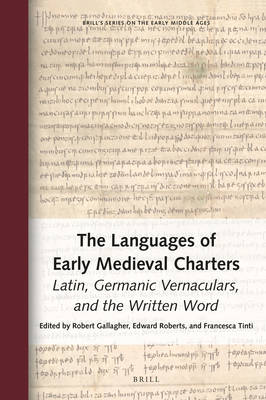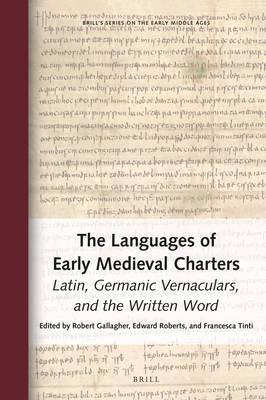
- Afhalen na 1 uur in een winkel met voorraad
- Gratis thuislevering in België vanaf € 30
- Ruim aanbod met 7 miljoen producten
- Afhalen na 1 uur in een winkel met voorraad
- Gratis thuislevering in België vanaf € 30
- Ruim aanbod met 7 miljoen producten
Zoeken
The Languages of Early Medieval Charters
Latin, Germanic Vernaculars, and the Written Word
€ 261,45
+ 522 punten
Omschrijving
This is the first major study of the interplay between Latin and Germanic vernaculars in early medieval records. Building on previous work on the uses of the written word in the early Middle Ages, which has dispelled the myth that this was an age of 'orality', the contributions in this volume bring to the fore the crucial question of language choice in the documentary cultures of early medieval societies. Specifically, they examine the interactions between Latin and Germanic vernaculars in the Anglo-Saxon and eastern Frankish worlds and in neighbouring areas. The chapters are underpinned by an important comparative dimension on account of the two regions' shared linguistic heritage and numerous cross-Channel links.
Contributors are: Stefan Esders, Albert Fenton, Robert Gallagher, Wolfgang Haubrichs, Charles Insley, Kathryn A. Lowe, Rosamond McKitterick, Rory Naismith, Janet L. Nelson, Edward Roberts, Annina Seiler, Marco Stoffella, Francesca Tinti, Kate Wiles, Bernhard Zeller.
See inside the book.
Contributors are: Stefan Esders, Albert Fenton, Robert Gallagher, Wolfgang Haubrichs, Charles Insley, Kathryn A. Lowe, Rosamond McKitterick, Rory Naismith, Janet L. Nelson, Edward Roberts, Annina Seiler, Marco Stoffella, Francesca Tinti, Kate Wiles, Bernhard Zeller.
See inside the book.
Specificaties
Betrokkenen
- Uitgeverij:
Inhoud
- Aantal bladzijden:
- 564
- Taal:
- Engels
- Reeks:
- Reeksnummer:
- nr. 27
Eigenschappen
- Productcode (EAN):
- 9789004428119
- Verschijningsdatum:
- 26/11/2020
- Uitvoering:
- Hardcover
- Formaat:
- Genaaid
- Afmetingen:
- 155 mm x 235 mm
- Gewicht:
- 1061 g

Alleen bij Standaard Boekhandel
+ 522 punten op je klantenkaart van Standaard Boekhandel
Beoordelingen
We publiceren alleen reviews die voldoen aan de voorwaarden voor reviews. Bekijk onze voorwaarden voor reviews.










